Ski: 2021-2022 DPS Foundation Koala 118, 184 cm
Test Location: Mt. Crested Butte, Colorado
Days Skied: ~9
Available Lengths: 176, 184, 189 cm
Blister’s Measured Tip-to-Tail Length (straight-tape pull): 182.1 cm
Blister’s Measured Weight per Ski: 2234 & 2261 grams
Stated Dimensions: 143-118-132 mm
Blister’s Measured Dimensions: 144.9-119.6-134.3 mm
Stated Sidecut Radius (all lengths): 19 meters
Measured Tip & Tail Splay (ski decambered): 70 mm / 54 mm
Measured Traditional Camber Underfoot: 5 mm
Core: aspen + carbon stringers + fiberglass laminate
Base: sintered “World Cup Race Base”
Factory Recommended Mount Point: -5.95 cm from center; 85.1 cm from tail
Boots / Bindings: Tecnica Mach1 MV 130, Atomic Hawx Ultra 130 / Tyrolia Attack2 13 AT

Intro
The original DPS Koala 119 caused quite the stir here at Blister when they released it in their 19/20 lineup. It was very different from what we had come to expect from the brand, with a progressive mount point, twinned tail, and a very beefy, heavy construction.
The result was a ski that both encouraged a more playful skiing style, while also being extremely composed at high speeds.
For the 21/22 season, DPS updated the wide Koala (and also added the Koala 103). We skied the new Koala 118 quite a bit last season, and after getting back on it during the wild storm cycle this December at Mt. Crested Butte, it’s time for our full review.
What DPS says about the Koala 118
“The newly designed Koala 118 is an entirely fresh shape that places increased emphasis on the freestyle fun factor, while providing plenty of stability and edgehold. Let the whole mountain become your powder playground with its 19m turn radius, deep rocker lines, and a softer, more progressive flex pattern than its predecessor. Enjoy buttering and spinning off your favorite features as you link together as many hits as possible on a pow day.”
Construction
The Koala 118 is made with DPS’ “Foundation” construction, which is their most affordable option and the one where “weight was not a factor in the design process.” The current iteration consists of a poplar wood core with carbon stringers and a fiberglass laminate, along with a sintered “world cup race base.”
Shape / Rocker Profile
There isn’t much change here, relative to the previous Koala 119. The two versions share a nearly identical shape and rocker profile. Compared to other playful powder skis, the Koala 118’s shape isn’t particularly out of the ordinary in terms of taper, and its rocker lines are also pretty standard for this sort of ski.
Flex Pattern
Here’s how we’d characterize the flex pattern of the Koala 118:
Tips: 7
Shovels: 7.5-8.5
In front of the Toe Piece: 9-9.5
Underfoot: 10
Behind the Heel piece: 9.5-9
Tails: 8.5
This is one of the main differences between the original Koala 119 and the new Koala 118; the new 118’s tips and tails are noticeably softer.
That said, the Koala 118 is still very stiff through most of the ski, and its tail is significantly stiffer than a lot of twin-tipped pow skis. And as we’ll get into below, this ski certainly does not feel like some super soft jib stick.
Sidecut Radius
The original Koala 119 had a stated sidecut radius of 23 meters for all lengths. The new Koala 118 knocks that down to 19 meters for all lengths. 19 meters is on the shorter end of the spectrum for powder skis, though not out of the ordinary for more playful ones. And similar to its flex pattern, I wouldn’t put to much emphasis on the Koala 118’s on-paper sidecut radius (more on that later).
Mount Point
Not much change here. Our pair of the Koala 118 has a recommended mount point of -6 cm from true center, while our pair of the Koala 119’s mount point was -6.5 cm from true center.
So this is still a ski designed around a more forward, progressive mount point, but it’s still not nearly as center-mounted as skis like the Volkl Revolt 121 and Prior CBC.
Weight
When DPS told us they were aiming to make the new Koala 118 more playful than its predecessor, we were a bit worried that meant they were going to take a whole bunch of weight out of it. And while the ski has gotten lighter, it’s still on the heavier end of the spectrum.
As we’ve said countless times, weight is your friend if you want good suspension and stability at high speeds in rough snow. And the Koala 118 still has a good bit of weight to help with that.
For reference, here are a number of our measured weights (per ski in grams) for some notable skis. Keep in mind the length differences to try to keep things apples-to-apples.
1710 & 1744 Atomic Bent Chetler 120, 184 cm (18/19–21/22)
1808 & 1809 Line Pescado, 180 cm (16/17–21/22)
1873 & 1878 Line Vision 118, 183 cm (20/21–21/22)
1870 & 1895 Faction La Machine, 186 cm (20/21–21/22)
1895 & 1906 Folsom Trophy Carbon, 188 cm (18/19–21/22)
1970 & 1973 4FRNT Renegade, 184 cm (19/20–21/22)
2006 & 2063 Elan Ripstick 116, 193 cm (20/21–21/22)
2019 & 2051 K2 Mindbender 116C, 186 cm (19/20–21/22)
2024 & 2031 Line Outline, 186 cm (19/20–21/22)
2034 & 2052 Blizzard Rustler 11, 188 cm (17/18–21/22)
2043 & 2046 4FRNT Inthayne, 188 cm (18/19–21/22)
2062 & 2080 Whitedot Ragnarok ASYM, 190 cm (19/20–21/22)
2104 & 2108 Hinterland Maul 121, 186 cm (19/20–21/22)
2136 & 2174 K2 Reckoner 122, 184 cm (20/21–21/22)
2149 & 2158 DPS Alchemist Lotus 124, 191 cm (17/18–20/21)
2163 & 2166 Moment Wildcat, 184 cm (21/22)
2173 & 2204 4FRNT Renegade, 191 cm (19/20–21/22)
2212 & 2215 Armada ARV 116 JJ, 185 cm (17/18–21/22)
2222 & 2278 Prior CBC, 184 cm (17/18–21/22)
2234 & 2261 DPS Foundation Koala 118, 184 cm (21/22)
2240 & 2250 Volkl Revolt 121, 184 cm (19/20–21/22)
2250 & 2280 Movement Fly Two 115, 184 cm (19/20–21/22)
2259 & 2279 Black Crows Anima, 189.2 cm (20/21–21/22)
2280 & 2286 Icelantic Nomad 115, 191 cm (19/20–21/22)
2288 & 2301 Folsom Rapture (Custom), 192 cm
2323 & 2352 Moment Chipotle Banana, 193 cm (14/15; 19/20–21/22)
2341 & 2357 Dynastar M-Free 118, 189 cm (18/19–21/22)
2343 & 2360 J Skis Friend, 189 cm (19/20–21/22)
2346 & 2351 Nordica Enforcer 115 Free, 191 cm (17/18–21/22)
2416 & 2468 Liberty Genome, 187 cm (17/18–20/21)
2438 & 2480 DPS Foundation Koala 119, 189 cm (19/20–20/21)
2438 & 2492 Rossignol BLACKOPS Gamer, 186 cm (16/17–21/22)
2561 & 2585 Kye Shapes Numinous, 189 cm (19/20–21/22)
2700 & 2703 Armada ARG II, 187 cm (19/20–21/22)
Alright, now onto how this ski actually performs on snow:
FULL REVIEW
For reference, we spent all of our time on the 184 cm Koala 118 at Mt. Crested Butte. Dylan Wood and I both skied it during a few storm cycles (Jonathan Ellsworth also took it out for a couple laps), and we’ve also broken it out on some lower-snow days to get an idea of this wide ski’s versatility.
Powder
Luke Koppa (5’8”, 155 lbs / 173 cm, 70 kg): I was on the Koala 118 during what was probably the best pow day of last season, when we got about a foot of fresh, some winds that heavily loaded certain slopes, and full bluebird conditions. It was awesome.
In untracked powder, the Koala 118 feels pretty maneuverable and loose. Its tails are easy to break free into drifts, it holds a sideways slarve pretty well, and I didn’t have any issues with its tips diving on me in up to about a foot and a half of moderate-density powder.
That said, this doesn’t feel like a ski that’s designed for bouncing around in low-angle terrain. Across pretty much all conditions and terrain, I enjoyed the Koala 118 the most when I was either skiing pretty fast, or at least keeping my momentum going down the fall line. When we were starting and stopping a bunch to get photos, the Koala 118 could feel fairly sluggish. But when I finally got to put the camera back in the pack and move to the next spot with some pace, I really started to enjoy this ski.
So if you’re after a ski that’s really easy to ski through pow at slower speeds and super tight terrain, I’d look to something lighter and softer (e.g., Line Outline). But if you like to ski fast and appreciate continuous lines (rather than lots of starting and stopping), the Koala 118 is a lot of fun — and is still very easy to throw sideways when you need to.
Really though — and likes its predecessor — the Koala 118 stands out from most pow skis when the untracked snow has been consumed and soft chop is what’s on the menu for the rest of the day.
Dylan Wood (5’11”, 155 lbs / 180 cm, 70 kg): I don’t disagree with anything Luke said. In untouched powder, the Koala floats well, is easy to slide and slarve around, and can be skied with a forward or centered stance.
I also think it is important to reinforce that the Koala 118 would certainly not be my first pick for noodling around in moderate terrain; it definitely needs some speed to come alive. It also requires some muscling around to make hop turns and negotiate tight, technical terrain, but its stability comes in handy in the high-speed, choppy runouts that sometimes come after such technical terrain (e.g., The Edge or Sock-it-to-me Ridge at Mt. CB).
Soft Chop
Luke: Like the Koala 119, the new 118 really shines in soft, choppy conditions.
Despite its tips and tails getting a bit softer, its slightly lower weight, and its tighter sidecut radius, the Koala 118 is still a very stable and composed ski when skiing fast in cut-up powder — especially compared to other playful powder skis with progressive mount points and twinned tails.
Looking at the Powder Skis sections in our Winter Buyer’s Guide, there aren’t many that do as good of a job of blowing through soft chop as the Koala 118. The Koala 118’s weight helps here, but so does its stiff flex pattern. As I alluded to above, the Koala 118’s tips and (less so) its tails got a bit softer, relative to the Koala 119, but the Koala 118 still feels very stiff on snow. That means I can lean into it and drive it through every little pile of cut-up snow and trust it to not fold up.
At the same time, the Koala 118 is still pretty easy to shut down when you get ahead of yourself. You do have to stay overs its shovels to do so, more so than softer pow skis, but the Koala 118’s sweet spot felt big enough that I was rarely worried that I wouldn’t be able to shed speed in time.
In sum: if you like a ski that doesn’t make you drastically dial back your speed when all the fresh pow is chopped up — but you also want a more progressively mounted, somewhat playful platform — this Koala is still one of your better options.
Dylan: Absolutely. The Koala lets you keep your speed up in rough snow and you can really trust it when driving it through chop and even soft, relatively small moguls.
I do agree with Luke in that the Koala is a relatively playful and maneuverable ski, especially for how strong and stable it is. I did find it to be significantly more punishing and thought it required more pressure on the shovels to release than many other playful skis, though. Softer, lighter skis like the 183 cm Line Vision 118 feel significantly easier to release and pivot, but even the 189 cm Black Crows Anima felt easier to slash and slide around, and more forgiving of tail-gunning it through some soft bumps.
Firm Chop / Crud
Luke: At the tail end of a popular resort pow day or during the days following the storm, the Koala 118 can still be quite fun, but it definitely feels most at home in soft-ish conditions. This is because of a couple things.
First, the Koala 118’s suspension. Personally, I never thought the Koala 119’s suspension was amazing, given how heavy it was (though we skied it in the 189 cm length). And the 184 cm Koala 118 feels similar in that regard.
Now, some of this is personal preference; if I’m getting on a pretty heavy ski, I typically want a pretty “plush” ride quality. My personal favorite chop destroyer, the Rossignol Blackops Gamer, provides that in spades. That ski is even heavier than the Koala 118, but the Gamer is also notably softer. And I think the Koala 118’s stiff flex pattern (like the old Koala 119) is what keeps it from being some super plush, steamroller of a ski.
To be clear: the Koala 118 still handles crud better than a lot of skis around its width, and it’s very, very far from some harsh, ping-y ski. And I think some skiers (like our own Paul Forward) will prefer the Koala 118’s ride quality over something heavier and softer, like the Gamer. But if you’re someone who likes certain heavy skis because of how they seem to “conform” to the snow and absorb every little vibration, the Koala 118 isn’t your best option.
Since we’re not allowed to use car analogies, I’ll put it this way: a really heavy, softer ski like the Gamer is like how a mediocre mountain biker like me would set up a Downhill bike, with soft suspension and comfort as the main priority. The Koala 118 is more like how a racer would set up their Downhill bike, with support and the ability to carry speed being higher priorities than bump absorption and comfort.
Suspension aside, the Koala 118 is also just a pretty big, hefty ski. So when you’re getting knocked around by very firm crud, it just feels a bit cumbersome. This is less specific to this ski in particular, and more so just the downside of skiing a ski this wide in conditions it wasn’t really designed for.
All that said, I want to be clear that the Koala 118 still remains more composed and handles speed in rough conditions better than most similarly wide skis. It’s by no means scary, and you can take it easy if you want. But I think aggressive skiers will like this ski the most in crud, whereas those who are happy to dial back their speed significantly in rough conditions have better options.
Dylan: I do like the mountain bike analogy that Luke used, because I think it does a great job of describing the Koala’s suspension. It doesn’t feel the smoothest in rough snow for its weight, but the same qualities that make it not very compliant at slower speeds also allow you to drive it really hard at high speeds without it folding up on you.
I did take the Koala out on a few occasions where it had been a day or two since it snowed, and even on a day when we only got an inch or two after not getting snow for a week or so. While I’d probably prefer the narrower Koala 103 in these instances, the wider Koala 118 still felt reasonable to bring out and not totally out of its element. It encouraged me to ski fast and was less tolerant of a centered stance on firmer snow, but it still offered that stable-yet-playful ride that the Koala is becoming known for.
Moguls, Trees, & Tight Terrain
Luke: If I’m skiing the Koala 118 in tight terrain that’s covered in soft snow, it’s quite manageable and quite fun. My caveat from the powder section does still apply, though — this is a ski that I think is most enjoyable when you’re maintaining at least a bit of speed and momentum, rather than frequently starting and stopping. This is something I have found with most similarly heavy and wide skis.
At super slow speeds in very tight terrain, the Koala 118 can feel a bit sluggish. But keep linking continuous turns, and it pretty quickly comes alive. It’s not difficult to release and slash through tight spots, and if you run into the occasional patch of consolidated chop, it won’t flinch (as long as you keep driving it through that patch of snow).
The Koala 118 is still a pretty stout ski, so those who frequently find themselves in the backseat should look elsewhere. It’s by no means the most punishing ski in its class, but particularly compared to other twin-tipped, more forward-mounted pow skis, the Koala 118 won’t be as forgiving of sloppy technique.
And if we’re talking about tight terrain that’s covered in pretty firm conditions, the unforgiving nature of the Koala 118 is more apparent. However, it’s still pretty easy to slide around on firm snow, and it does a better job of muting out harsh snow than pretty much all of the lighter skis in its class.
There are lots of lighter, softer skis that are better for meadow skipping through lower-angle trees, but if you like to hunt for pow in steep trees and technical terrain, the Koala 118 can be the right tool for the job — especially if you keep a bit of speed going.
Dylan: I totally agree. The Koala is near the bottom of the list of skis I’d reach for if I were constantly skiing tight terrain, especially tight terrain that doesn’t flow very well, like awkwardly spaced trees.
However, it is manageable enough in tight terrain, especially with good technique and pressure on its shovels, that I am perfectly happy to occasionally go seeking some powder stashes in the trees or billy-goating in tight terrain (probably following Eric Freson or Drew Kelly).
Groomers & Firm, Smooth Snow
Luke: The Koala 119 was predictable on groomers but not particularly exciting to me (no surprise for a pow ski). The Koala 118 feels pretty similar, though its shorter 19-meter sidecut radius does help a bit here.
On soft groomers, the Koala 118 is totally capable of laying down pretty hard carves. It does take a good bit of aggression to actually bend on piste, but you can also just ride its sidecut and make mellow, clean carves.
As I alluded to above, the Koala 118’s stated 19-meter sidecut radius does not feel super short on snow. I think it feels longer than I’d expect. And I’m totally fine with that — I never noticed a hint of hookiness in any conditions, but the Koala 118 does feel a bit more engaging than its predecessor when taking a groomer back to the lift.
On very firm groomers or wind-scoured off-piste pitches, the Koala 118 is totally predictable. I don’t feel like really laying it over on those conditions (it is a rockered, 118mm-wide pow ski, after all), but I’ve never had it slide out unpredictably underneath me.
Dylan: Luke nailed it. The stiff Koala 118 isn’t easy to bend into tighter turns than its 19-meter radius naturally allows, but it certainly can be done on softer groomers with plenty of edge grip (but not so soft that you are just washing out the tails). The ideal groomer for the Koala would be something that got snow overnight and was just groomed that morning.
Like most pow skis, I am not too picky with the Koala 118’s groomer performance. I was definitely very satisfied with the Koala 118 whenever I found myself carving a groomer back to the lift, though.
Playfulness
Luke: On one hand, the Koala 118 has a twinned tail, a mount point that’s fairly close to center, pretty deep rocker lines, and a fairly tapered shape. On the other hand, it’s quite stiff overall and pretty heavy.
The result is a ski that I wouldn’t call very playful overall, but it can certainly suit a certain type of “playful” skiing style. Namely, the style of those who like to ski fast and hard all over the mountain, but who also seek out natural hits, spin, flip, and ski switch.
If you want a ski with a low swing weight, one that’s easy to butter, or that’s super poppy, this isn’t your ski. But the Koala 118 does feel pretty balanced in the air, it skis switch well, and it is super confidence inspiring when the in-run or runout involves getting through some variable snow. And given that Dash Longe was a big part of the design of this ski, that all makes sense. He’s known for going big and fast, not slow-speed stunts.
Dylan: Totally. The Koala is balanced and fairly easy to slash and surf around on (again, preferably with good technique). I found myself not very intimidated to flip and spin it, though I definitely wanted to make sure I landed in a balanced manner, as landing backseat can be harsh on the Koala.
Who’s It For?
Luke: Advanced and expert skiers who want a powder ski that lets them ski just about as fast in soft chop as they do in untracked snow, and who prefer a more maneuverable, more progressively mounted platform.
As a resort powder ski, the Koala 118 stands out because of its stability in chop and its versatility in terms of skiing style. Directional skiers can drive it hard through the shovels, while those who ski with a more centered stance will still be able to get along with it.
It is not a super forgiving ski, nor is it quick. So if you mostly want an easy powder ski that makes lower-angle terrain really fun, you’ve got better options (see the Powder Skis sections in our Winter Buyer’s Guide). And if you plan on using this ski very frequently on days when it hasn’t snowed in a long time, I’d recommend looking into narrower options.
But overall, the Koala 118 is a compelling option for those who value stability and high-speed composure, but who also want a ski that’s comfortable in the air, easy to throw sideways, and that can cater to a more playful skiing style.
Bottom Line
The revised DPS Foundation Koala 118 maintains much of what made the original Koala 119 so special. This is still a strong, substantial ski that handles resort chop and crud better than the majority of skis around the same width, yet its mount point and rocker profile also make it intuitive when getting in the air or laying down a big slash. The latest version is a bit more accessible and slightly more engaging at more moderate speeds, but it does so without losing a whole lot of the original’s overall ride quality.
Deep Dive Comparisons
Become a Blister Member or Deep Dive subscriber to check out our Deep Dive comparisons of the Koala 118 to see how it compares to the previous Koala 119, Black Crows Anima, Rossignol Blackops Gamer, Kye Shapes Numinous, Dynastar M-Free 118, J Skis Friend, Volkl Revolt 121, Moment Wildcat, Salomon QST Blank, Moment Chipotle Banana, 4FRNT Renegade, 4FRNT Inthayne, Line Outline, Line Vision 118, Season Forma, and Atomic Bent Chetler 120.

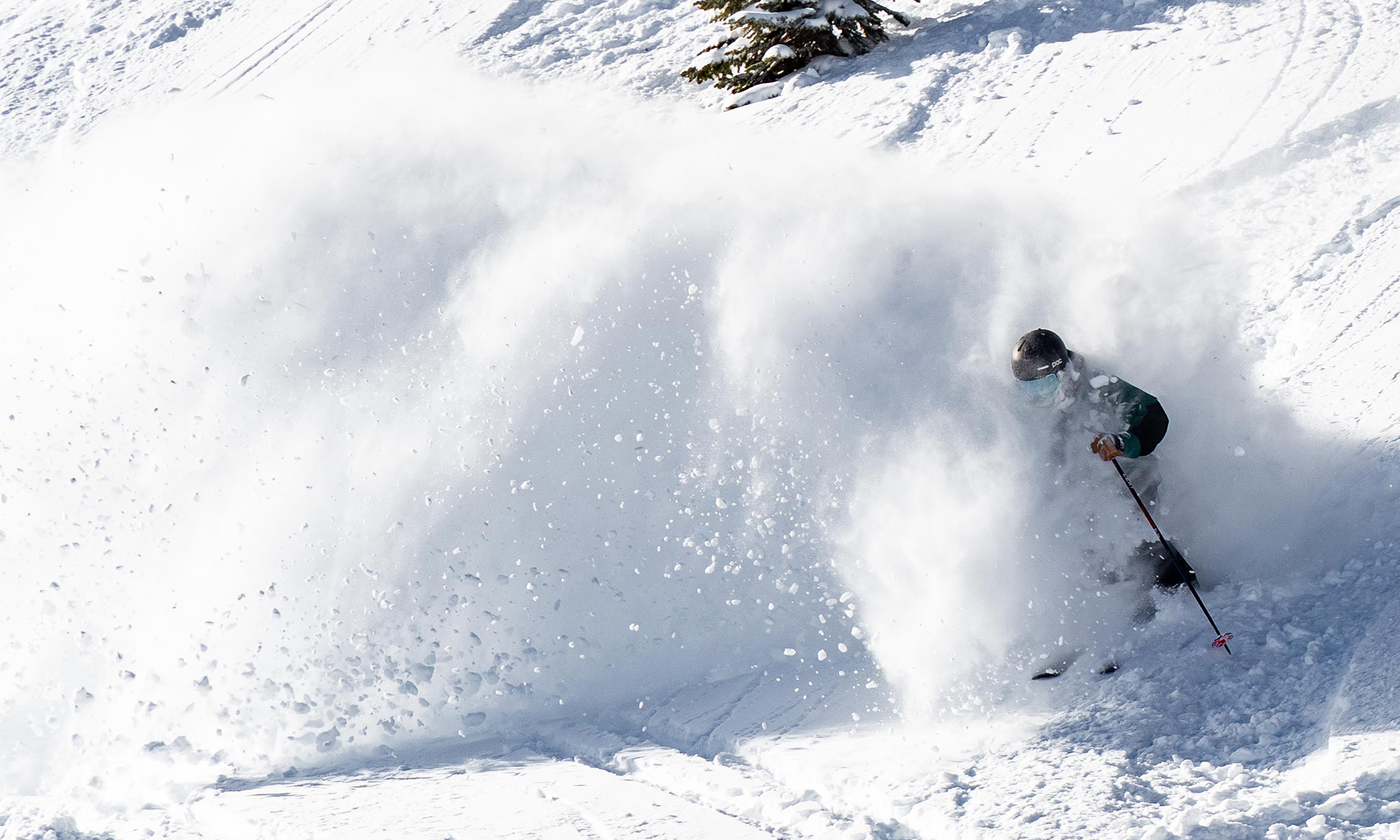

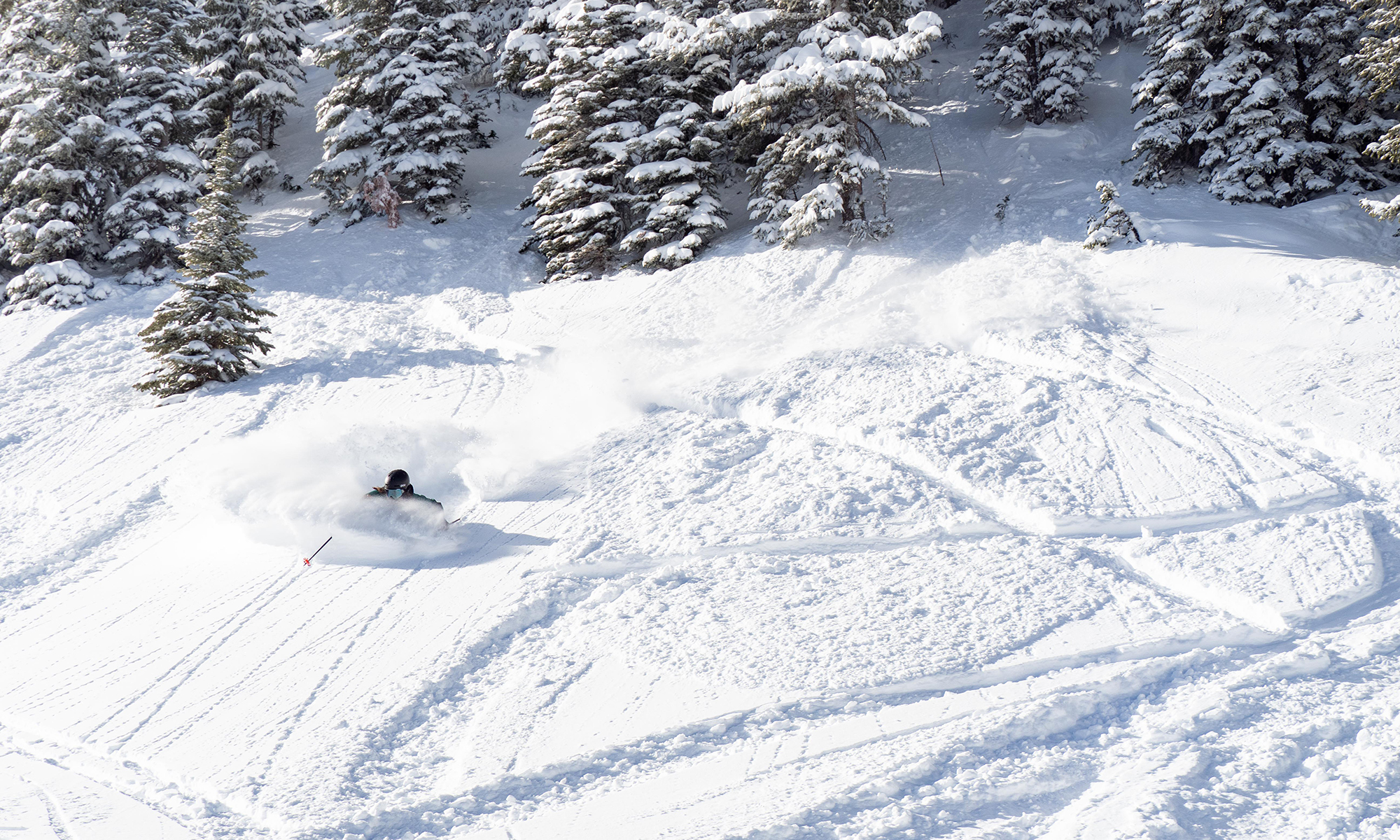
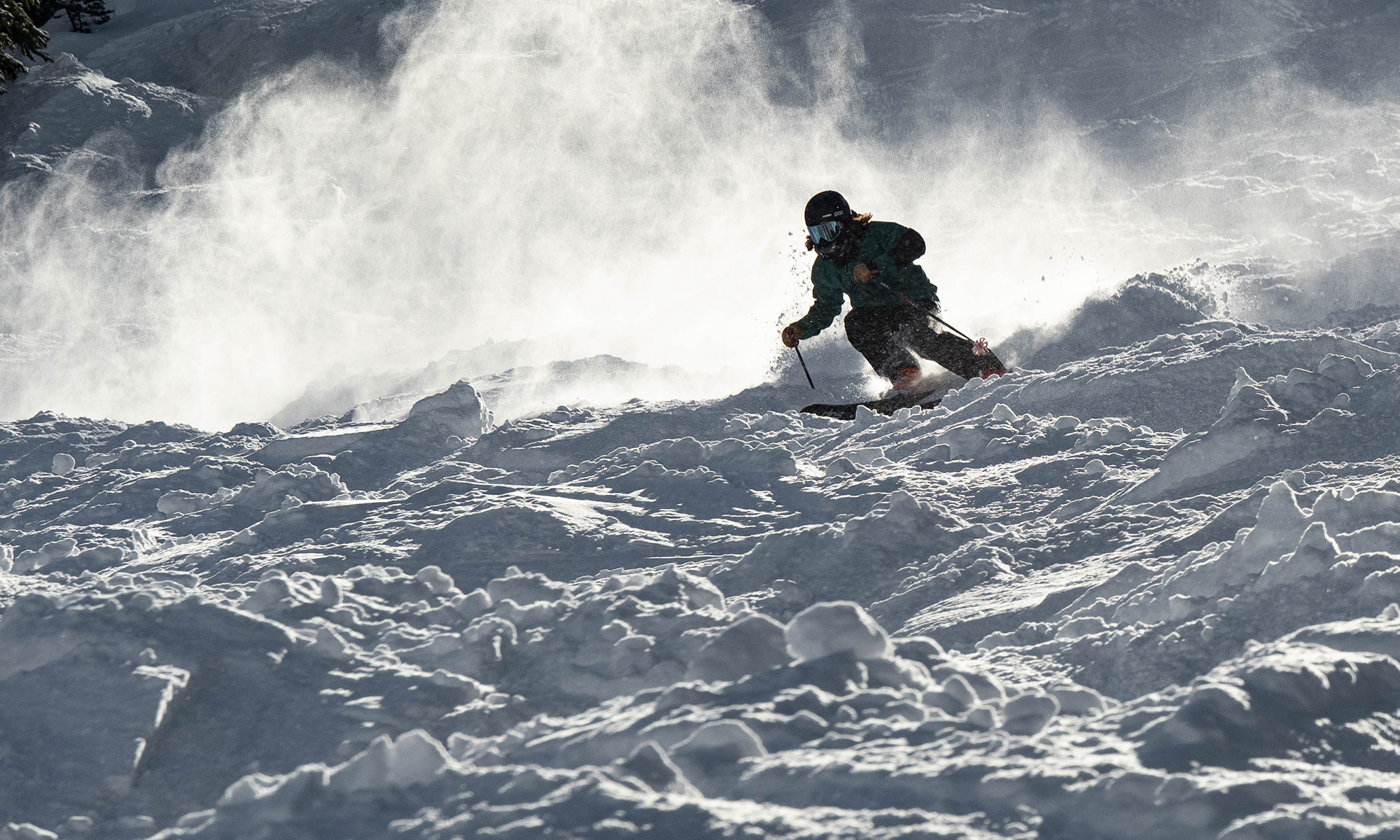
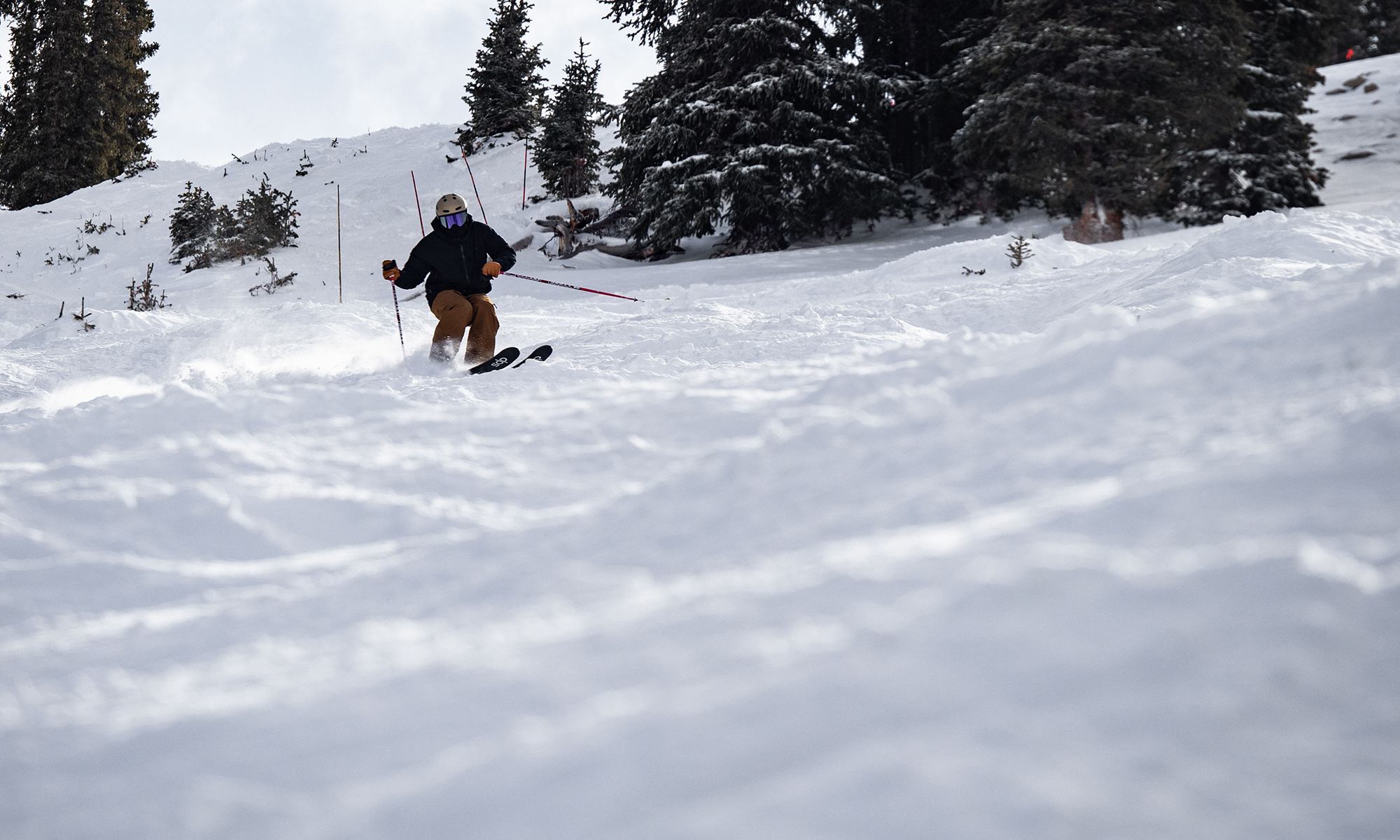
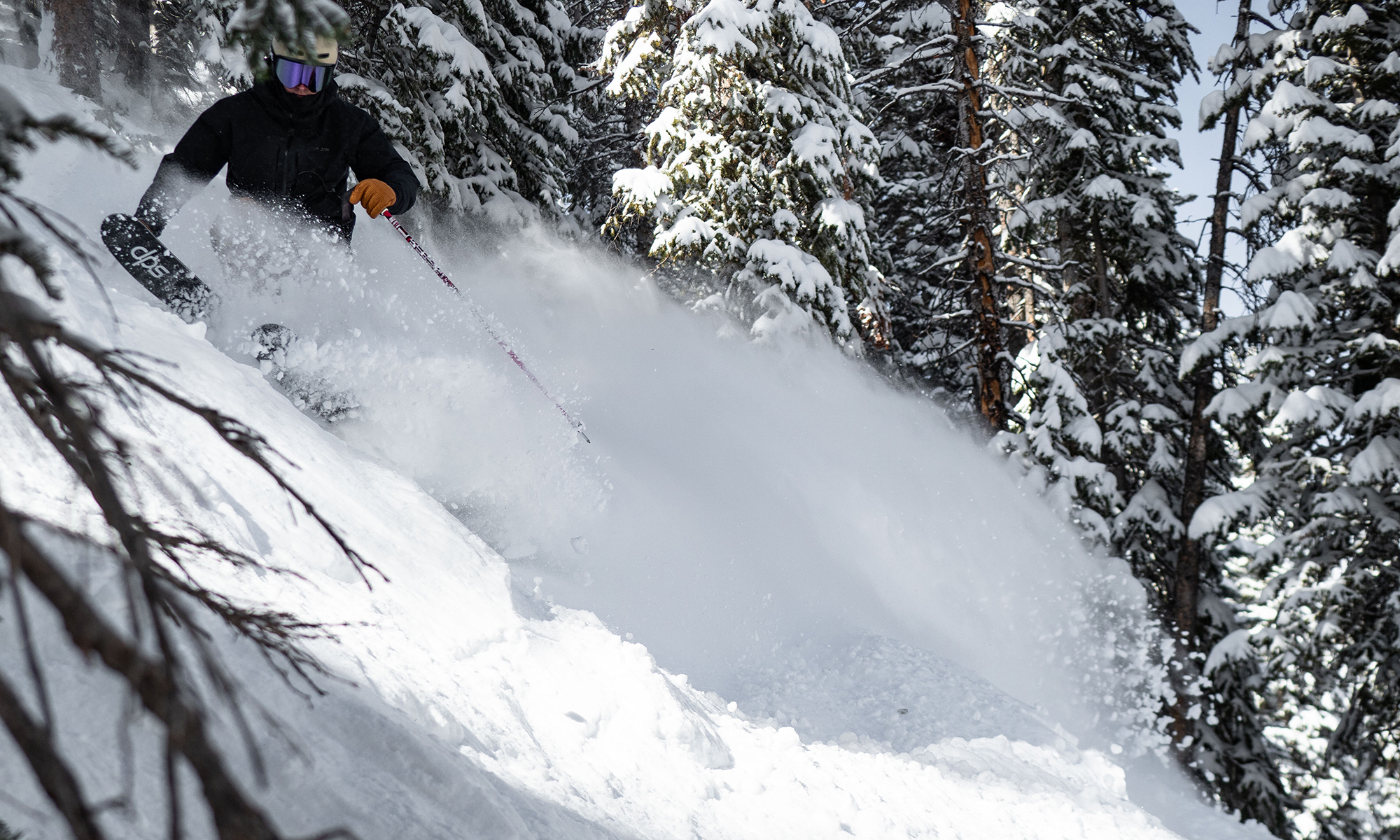
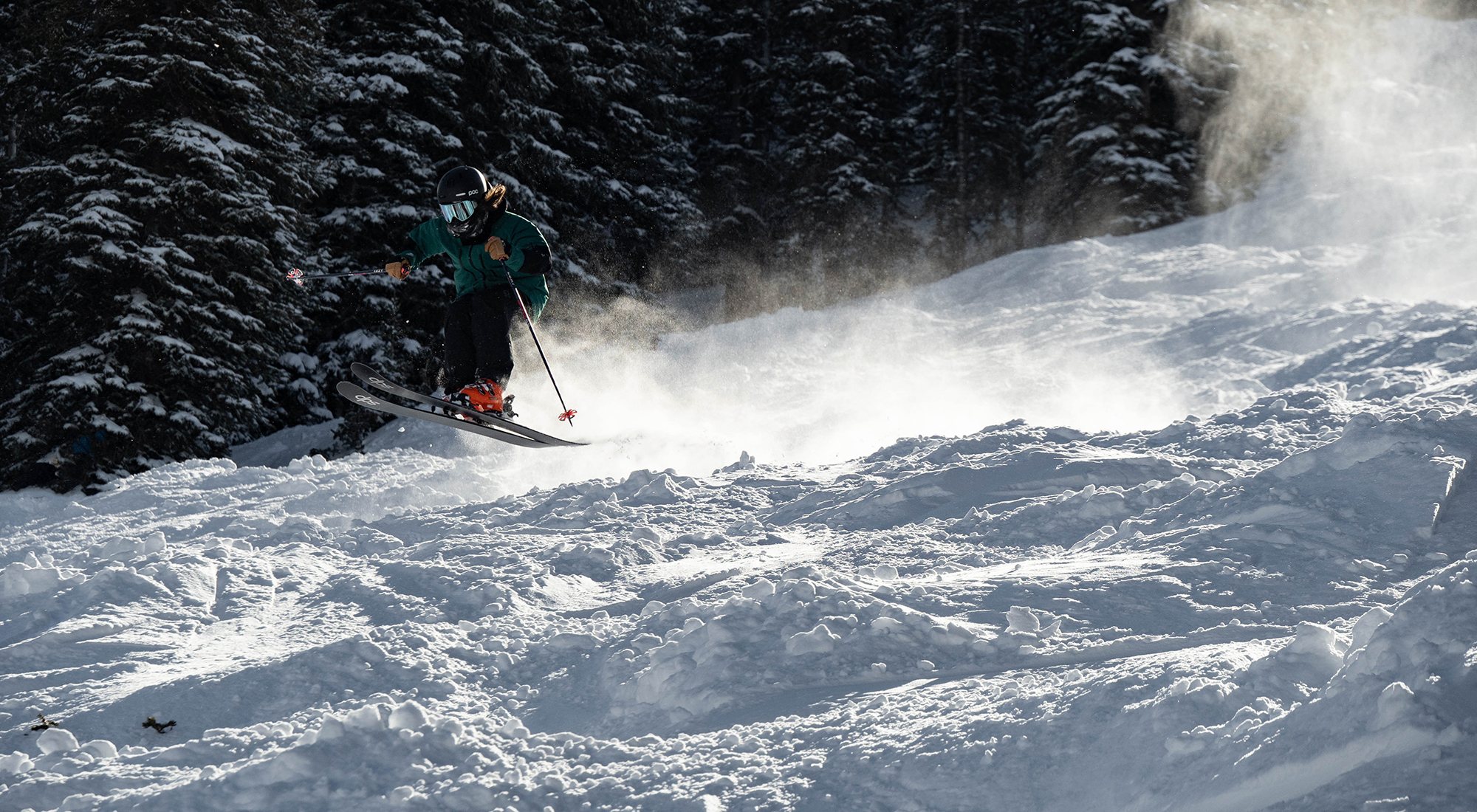

Thanks for the review Luke and Dylan, interesting to hear the differences between the 119 and 118. Always funny reading the manufacturer’s copy “entirely fresh shape” oh yeah? Not just the same as the shape for the last 2 years then…
Great insight on the need for some decent slope angle and not too much start/stop, that’s really helpful.
Would be keen to hear Jonathan’s thoughts
Hope Paul gets on the 189 soon
Speaking as part of the product development team for this ski, we do see the shape as significantly different. The new 118 has more rocker both tip and tail, the turn radius was changed, as was the transition zone from the sidecut to the slightly tapered tip. It’s both a new mold and rocker profile compared to what we used for the 119. That plus the new flex profile is fresh in our opinion. It’s subtle details yes, and the 118 and 119 do share a lot of the same DNA, but the performance differences come from the combination of all of the changes we made to the ski.
One of the things that I really appreciate about the Blister community is that the companies themselves read, listen and contribute. Thanks for the insight and taking the time to reply Nick, really appreciate it
Can you guys do an article or gear30 about mount points so I can understand the advantages of forward mounts? I am a pretty traditional skier who grew up on straight skis and don’t seem to get along with anything closer to center than -8 and generally prefer -10. I know what works but would like to understand how forward mounts work for other people who ski faster and more aggressively than I do.
Love the look of these. Can anyone comment on how this compares to the OG megawatts (original white or blue ones) and Lotus 120?
Greetings, the ski season has just ended and I’m already waxing my quiver to get them ready for their summer hibernation and the first days of the 2022-23 season. Obsession! Did you get a chance to ski the 189 cm. version of this ski yet? The measured dimensions of the 184 cm. version differ from the stated stats of the DPS catalog, so I would assume that the 189 cm. skis also vary some what?! By chance is there an upcoming review from Paul on the big version giving the stats and mount point from TC? I hope so !
Cheers,
DHJ
Luke, how would this ski do for someone who LOVES the previous Fischer Ranger 102FR, but wants a resort big dump pow ski? It’s probably a stretch to make that comparison directly, but I feel like the 102FR and the Koala 103 are similar enough so maybe the qualities translate okay?
5 stars! I added the Koala 118 184cm to my quiver at the beginning of this 22-23 season here in Vail. I am 6’1” 185-190 lbs, lift serviced, directional skier. Approx 100 sessions per season. We have had a great early season, and it’s given me many days on this ski. I have Tyrolia Attack demo bindings mounted, and would recommend demo bindings for any directional skier. The recommended mount line is clearly geared toward freestyle skiers, and is to far forward for my directional profile (I typically keep my ski pointed downhill). I ended up with the mount point 4cm behind the recommended line, and it is ideal! I started the season with a 5 ski quiver: DPS F100rp 184cm, DPS F106c2 185cm, DPS F112rp 184cm, DPS Koala 118 184cm, Liberty Genome 187cm. Note: all of these skis have bamboo in their core . It’s now mid Jan and I just sold my F106, and F112, just didn’t need those two excellent skis with the “outstanding” F100rp and Koala 118, that pretty much cover all my needs.
I was concerned about the 184cm length being to short in the 118 Koala, but it has worked out great! This is a heavy ski, particularly with the demo bindings, but is certainly worth it for the inbounds skier that prioritizes stability, and damping. It is one of the best wide powder bump skis I have ridden, very maneuverable in this length. It is also a excellent carving ski for this width on consistent groomers, and great tracking-stable pow ski, with average float for this width. I would recommend that you use a .75 bottom edge, and 1 degree side edge for all of the above DPS skis. After spending hundreds of combined days on these before mentioned Foundation DPS skis, 1 and 2 degree is to aggressive edge for these skis (and I have tried it) and is what most shops will typically use, if you don’t direct them. The 19m turn radius is a great match for this Koala shape. Cheers!
Just skied the 189 for the first time today. I’d say that pretty much everything in the review applies to the longer length. For comparison, I’ve been skiing the Rossignol Super 7RD for the past 4 years as my pow ski. In person the two skis look almost identical except for the side cut. I think the S7 is 30m vs the koala’s 19m. Both feel pretty stiff when flexing them in the garage. Mount point is within a cm, and weights are similar.
Skiing them was a completely different experience. The Koala feels much looser, can pivot pretty quickly, works better with medium size turns, is more planted and quite a bit less poppy. It also does a much better job of absorbing bumps and blowing through chop. The S7 RD is pretty stiff underfoot but has flexible tips, which led to getting pinged around in tracked out snow. The Koala’s flex feels more consistent and is able to absorb that kind of terrain.
Overall, I’d say the 189 Koala feels freestyle oriented, but it also feels very poised in powder and chopped up snow. I was skiing 1-2 feet of powder today and never thought I needed more float. I wouldn’t say you can drive the front of the ski really hard, but it felt comfortable going fast with a more upright stance. A directional skier might want to mount back a few cm as mentioned above.
Overall, I found it had a nice mix of qualities that I like. It’s pretty optimal for a resort pow ski.